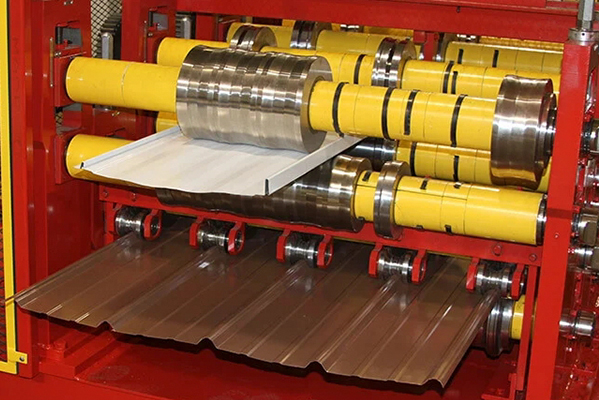Navigation Menu
Contact Us
- Email:
- info@wxavatar.com
- Address:
- Yurong Village, Yuqi Street, Huishan District, Wuxi, China.
Release Date:Apr 23, 2025 Visit:55 Source:Roll Forming Machine Factory
A decoiler is an essential piece of equipment in metal processing and manufacturing industries, designed to unwind coiled materials such as steel, aluminum, or other metal strips for further processing. The decoiling process ensures a smooth and controlled feed of material into subsequent machinery, such as levelers, slitters, or stamping presses. Below is a detailed explanation of the decoiler's operation.

1. Loading the Coil
The first step involves placing the coiled material onto the decoiler. This can be done manually or with the assistance of a crane or forklift, depending on the coil's size and weight. The coil is positioned on the decoiler's mandrel or expanding shaft, which is then adjusted to securely hold the coil in place.
2. Aligning and Centering
Proper alignment is crucial to prevent material deviation during unwinding. The decoiler may feature adjustable side guides or hydraulic centering mechanisms to ensure the coil is correctly positioned. This step helps minimize edge damage and ensures smooth feeding into downstream equipment.
3. Unwinding the Material
Once the coil is secured, the decoiler begins unwinding the material. Depending on the decoiler type, this can be achieved through:
Motor-Driven Decoilers: Use an electric or hydraulic motor to rotate the mandrel, providing controlled unwinding.
Brake Decoilers: Rely on a braking system to regulate tension while the downstream equipment pulls the material.
Tension control is critical in this stage to prevent material slack or excessive stretching.
4. Feeding into the Next Process
The unwound material is guided through straighteners, rollers, or feeders to ensure proper alignment before entering the next processing stage. Sensors or loopers may be used to maintain consistent tension and prevent jams.
5. Recoiling or Cutting (Optional)
In some applications, the material may be rewound onto another coil after processing. Alternatively, it may be cut into sheets or blanks for further manufacturing use.
6. Unloading the Decoiler
After the coil is fully unwound, the remaining mandrel or core is removed, and the decoiler is prepared for the next coil.

Conclusion
The decoiler plays a vital role in metal processing by ensuring efficient and controlled unwinding of coiled materials. Its operation involves loading, centering, unwinding with proper tension control, and feeding material into subsequent equipment. By maintaining precision and stability, decoilers contribute to smooth production workflows in various industrial applications.